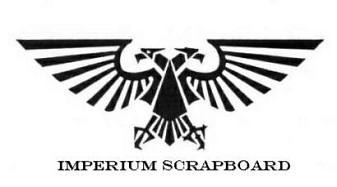

| +1 | Firing at a Large target | Anything over 3 metres high or long or ruled to be Size Three. Dreadnoughts and most vehicles and buildings are Large Targets. (This modifier does not apply to Area weapons. See note below.) | |
| -1 | Firing at a Small target | Anything under 30cm long or high or ruled to be Size One. (This modifier does not apply to Area weapons) | |
| -1 | Firing from a moving surface | Such as from a vehicle, horseback etc | |
| -1 | Firing at a fast-moving target | Applied for every full 12” moved in its previous turn. (This modifier does not apply to Laser weapons) | |
| -1 | If the firer is wounded | The firer has suffered any wounds unless healed or regenerated | |
| -1 | Target behind soft cover | Vegetation, wood or trees or figure lying down | |
| -2 | Target is behind hard cover | Stone, brickwork, walls, bulkheads, in trench | |
| -1 | Firing a pistol in each hand | See the “John Woo” rule. | |
| -1 | Tactical Movement | Firing while using tactical movement | |
| -1 | Throwing improvised weapons | Throwing bricks and other missiles. |
| Armour | Save | Move penalty |
| Marine Power Armour* | 3+ | none |
| Terminator Armour* | 2+ | none |
| Imperial Flak Armour | 5+ | none |
| Imperial Mesh | 4+ | ½” |
| Imperial Stormtroop Carapace* | 4+ | ½” |
| Heavy Mesh | 3+ | 1” |
| Heavy Carapace Armour* | 3+ | 1” |
| Eldar Mesh Armour* | 5+ | none |
| Eldar Aspect Armour* | 4+ | none |
| Squat Exo-Armour* | 2+ | none |
| Ork Body Armour | 6 | none |
| Ork 'Eavy Armour | 4+ | ½” |
| Ork Mega Armour | 2+ | 2” |
| Dark Eldar Incubi Armour* | 3+ | none |
| Tyranid Warrior Carapace | 5+ | none (body part) |
| Chain Mail/Light Plate | 6 | ½” |
| Plate Armour | 5+ | 1” |
| Close Combat | Shooting | |
| Buckler | +1 or 6 | None |
| Primitive Shield | +1 or 6 | +1 or 6 (Primitive weapons only) |
| Hi-Tech Shield | +1 or 6 | +1 or 6 |
| Combat Shield | 5+ Invulnerable | None |
| Power Shield | 5+ Invulnerable | 6 Invulnerable |
| Storm Shield | 4+ Invulnerable | ? |
By the Author of the Scrapboard : | |
|---|---|
 | Attack, Avoid, Survive: Essential Principles of Self Defence Available in Handy A5 and US Trade Formats. |
 | |
 | Crash Combat Second Edition with additional content. Epub edition Second Edition with additional content. Crash Combat Third Edition Epub edition Third Edition. |
 | |
 | |